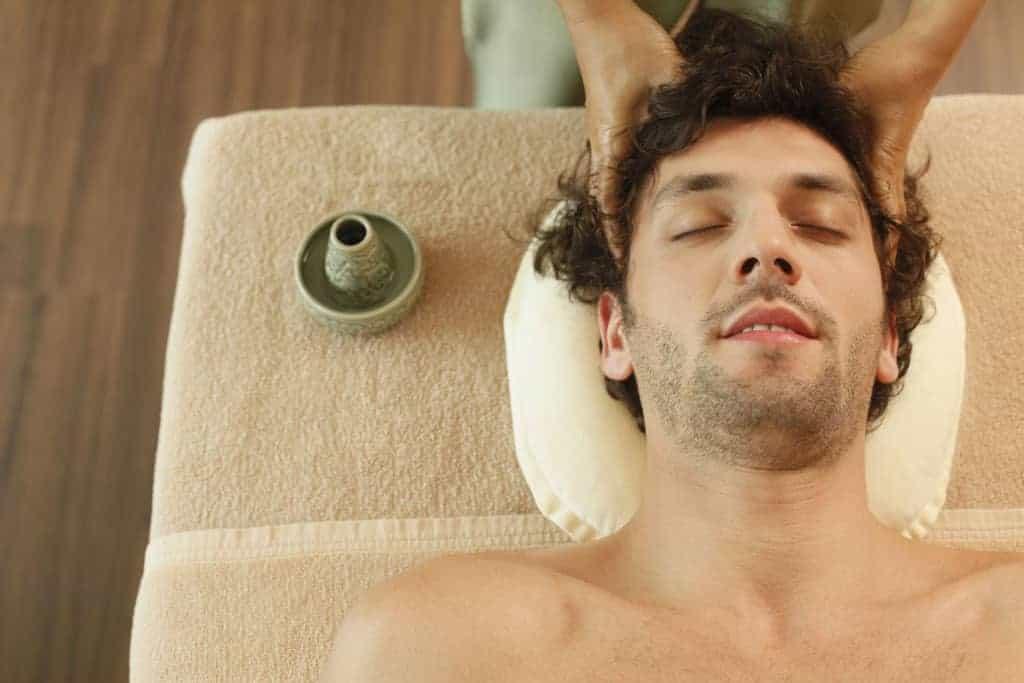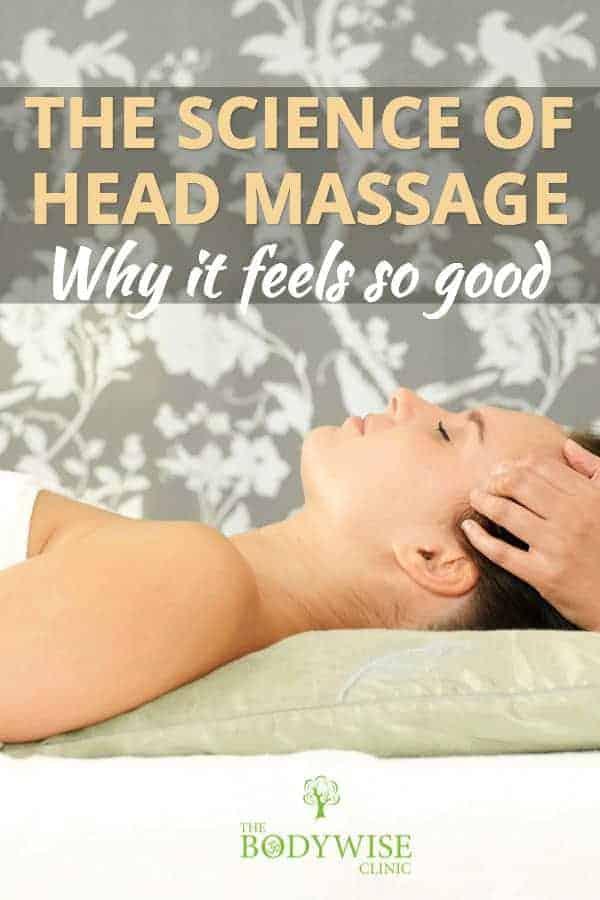Ask anyone that has enjoyed a scalp or head and shoulder massage from a trained masseuse if they feel better for it. The answer is a universal yes. Head massages are hard to beat for relaxation.
But what happens to our bodies when we receive a head, scalp, and neck massage? How does it work? Does kneading and stroking the part of the body surrounding the brain elicit some physiological response, or is it all in our head, literally?
You are viewing: Why Do Scalp Massages Feel So Good
The Goal Of Massage
The primary aim of massage therapy is to improve someone’s well-being. This may happen by targeting the causes of particular symptoms, such as neck pain, back pain, stress, and anxiety. Massage can also boost feelings of happiness and relaxation by the mere acts of laying on hands.
Humans and animals (and almost all living species) show positive responses to touch. Babies will not survive without parental touch and in fact, human touch decreases pain symptoms in newborns. Studies that examine the links between pain relief and touch show promising results.
What does this have to do with head massages?
Despite the relatively immobile cranium, small muscles around the head respond well to touch. And this part of the body is the closest to the brain, which processes sensations. The parts of the body that typically receive massage are the back and legs.
Massage helps ease muscle spasms and knots in parts of the body prone to tightness and tension. Obviously, the scalp and back of the head contain only small muscles that play no part in moving your body around or resisting heavy loads. But tension can build up in this area. And new studies have found that the body’s response to touch near the head is more complex than we once thought.
Researchers tested a group of 24 female students for the effects of head massage on their well-being. The study found that head massage treatment reduced depression symptoms, decreased feelings of boredom, and positively influenced anxiety levels. Another benefit was the feeling of liveliness experienced by the participants.
System Of Touch
A network of nerve endings and receptors in our skin processes touch and sensations and sends the information via the nervous system to the brain. Pressure receptors in the skin help the brain understand what’s going on in any part of the body. But some parts of the body have more pressure receptors than others.
Your face, fingers and tongue are highly sensitive thanks to the high density of receptors. The back, the target for most massage therapies, is actually much less responsive to touch because of the low density of touch receptors.
The Mind-Body Connection
The physical and mental benefits of massage are linked. Psychosomatic therapy has always looked at how the mind influences the body but this mind-body concept is increasingly accepted these days. External stimuli has the power to alter our brain chemistry, which affects our body. We now know our state of mind can influence our gut health and vice versa.
Negative thoughts and sensations can have a detrimental effect on our physical appearance. And the reverse is also true – physical pain or discomfort can lead to mental strain and depression.
The History Of Head Massage
Read more : Why Does My Generator Keep Shutting Off
We need to go back to our early ancestors and even to our primate cousins to find the origins of massage. Grooming behaviour was one of early mankind’s ways of building social structures. This instinctive technique for dealing with aches and for relieving stress would have been part of everyday life long before language was invented.
It takes a lot of trust for one human to let another touch their head. But our ancestors knew what was good for them. Massage therapy’s aim is the promotion of good health. Early humans figured this out and applied it daily.
Cave paintings in Europe depict scenes of “healing touch”, massage therapy in its original forms. Ancient Chinese wrote about health treatments involving therapeutic massage. Hindu scripts regularly talk of massage. The Ayurvedic tradition absorbed massage as an integral part of its teachings.
In modern times, Ayurvedic practitioners helped popularise Indian head massage in the west.
Recovery
Experts are currently examining a link between the use of Indian Head Massage and improved recovery from illness and injury.
A study found that Indian Head Massage reduced muscle tension, energised participants, and helped patients deal with negative psychological experiences.
Recovery from injury requires a multi-faceted approach. Doctors and other medical professionals should not expect to tell patients that a single approach to recovery is all they need. Physical therapy combined with therapies which affect mood and the parasympathetic nervous system is a much more effective approach. The fact is that depressed people recover from injury more slowly. Negative emotions often cause blockages in muscle tissue, a fact that every massage therapist and acupuncturist will relate to.
Head Massage & Hair Growth
Regrowth of hair is one of the touted benefits of head massage. But what’s the science behind it? Can follicles of hair grow back from the power of touch on the scalp?
Well, as far-fetched as it might seem, there is evidence of hair regrowth in clinical trials of “stretching forces”, similar to the effects of a scalp massage. A study from 2018 showed that after several months of a standardised scalp massage test on men, hair thickness increased significantly.
The main cause of male baldness is the DHT molecule, a male sex hormone. Balding caused by hormones cannot be reversed by scalp or head massage. However, the increased blood flow to the scalp from massaging the scalp can strengthen the hair follicles and prevent further hair loss.
The scalp, being at the top of the head, far from the heart, sometimes needs a little help with blood circulation. One contributor to male pattern baldness could be reduced blood flow to hair follicles.
We can make our own minds up here but one thing’s for certain, there are no negative effects from scalp massages but the potential positive effect on baldness (as yet inconclusive) makes it a worthwhile activity.

Memory Improvements?
There’s even such a thing as a brain massage – a treatment that uses electrical or magnetic pulses to stimulate the cells of the brain. It’s early days, but the research team found the potential for health improvements in a number of areas, one of which is memory improvement.
Read more : Why Did Jan Kill Tim
Researchers hope to use the discovery to benefit Alzheimer’s sufferers.
Another form of “brain massage” is the concept of binaural beats. This might sound like a headphone product by famous rappers, but it’s actually a scientific term for a type of audio technology said to induce meditative-like effects and improve concentration and memory.
Tests on a small group (25) of people showed promising results on the reduction of mental fatigue after receiving binaural beats and massage treatment. Researchers found that sustained attention, verbal short-term and long-term memory and non-verbal long-term memory were statistically significantly increased after using brain massage.
In essence, this concept of massaging the brain improves attention span, memory, alertness, and cognitive function. It helps us think better.
ASMR
A neurological term which might not be familiar by name is Autonomous Sensory Meridian Response (ASMR). But if we mention the phrase “head orgasm”, it might ring a bell, or at least grab your attention.
Remember the tingling, pleasurable sensation you feel when the hairdresser massages your scalp? That’s one way in which ASMR is induced.
They’ve called it one of the most powerful wellness techniques. There’s no denying that a head massage is an amazing experience. Just try it. But ASMR is a new sensory phenomenon that uses triggers such as sound and slow movements to generate the tingling sensation.
What does it feel like when you experience ASMR?
The phrase “head orgasm” is the usual response from participants. But let’s not get carried away. Not everyone experiences euphoric sensations. In general, the effect on mood is positive, with 4 out of every 5 people claiming it can create mood-lifting emotions (at least temporarily). Researchers found that the treatment may benefit people suffering from depression more than the average participant.
ASMR sensations can be felt in the back of the head and can move to the upper and lower back. Participants claim to experience “flow” – a mental state described as feeling as of one is “living in the moment”.
At present, the underlying mechanisms that help create these sensations are unknown. Triggering responses is replicable in most participants but it’s not clear why it happens. All we know is that the mood improvements that AMSR offers should generate more studies in the scientific community.
The point we’d like to make is that ASMR or “head orgasm” massage might be the newest, viral thing on the internet, but the underlying principles are based on therapeutic touch.
Head massage, in any form, should be part of your health regime.

Source: https://t-tees.com
Category: WHY
